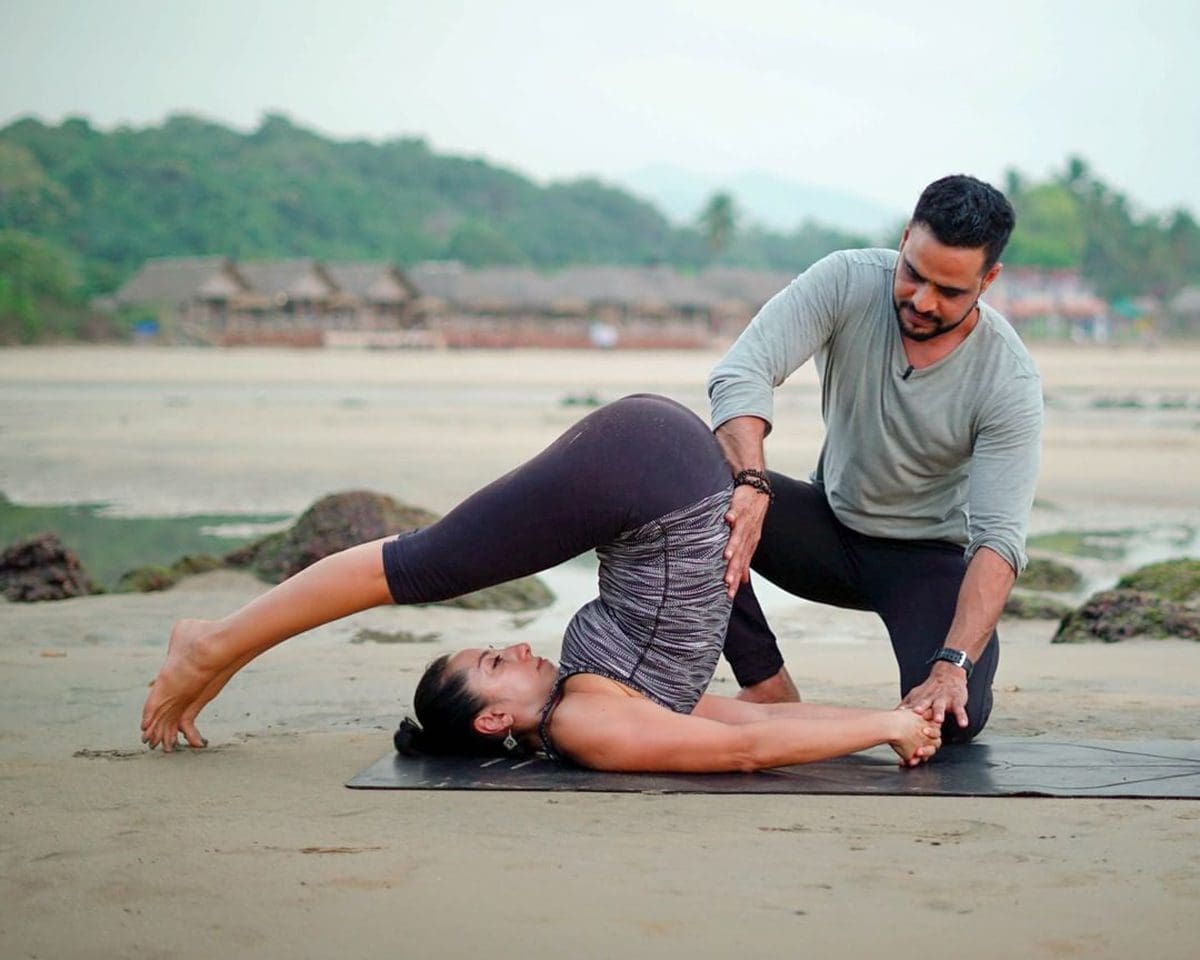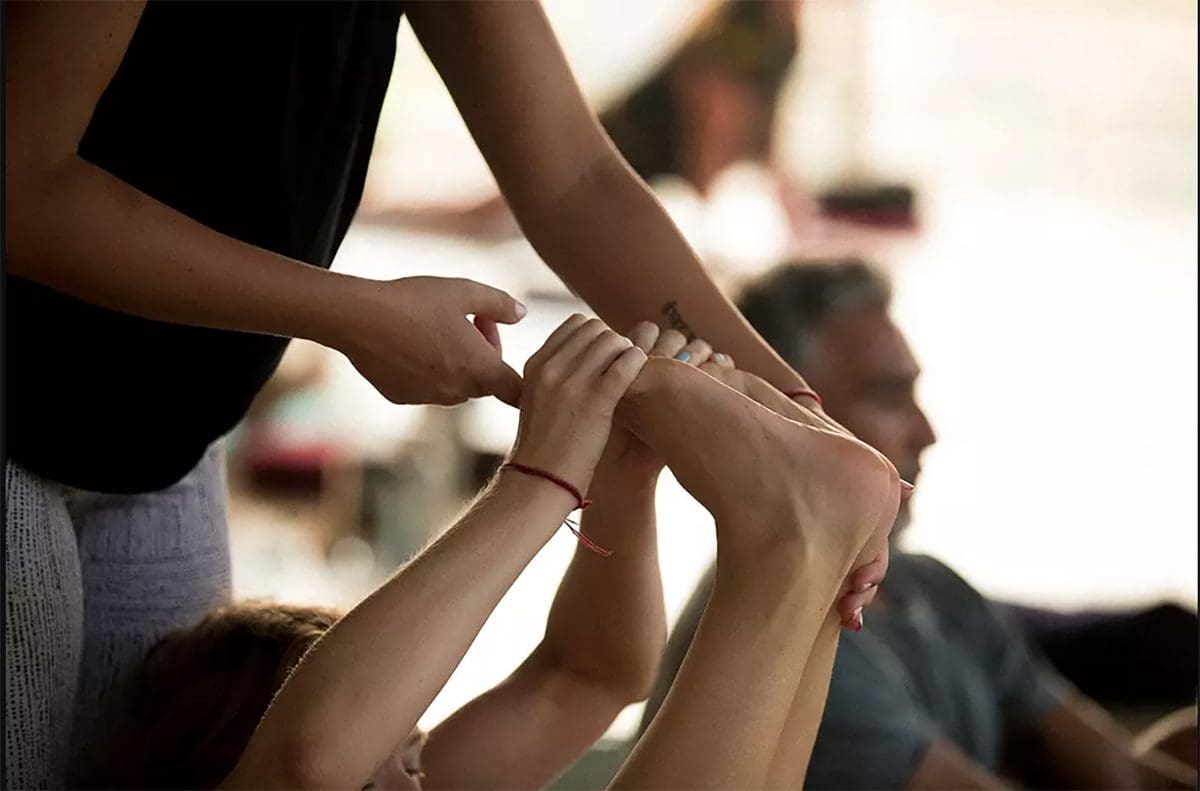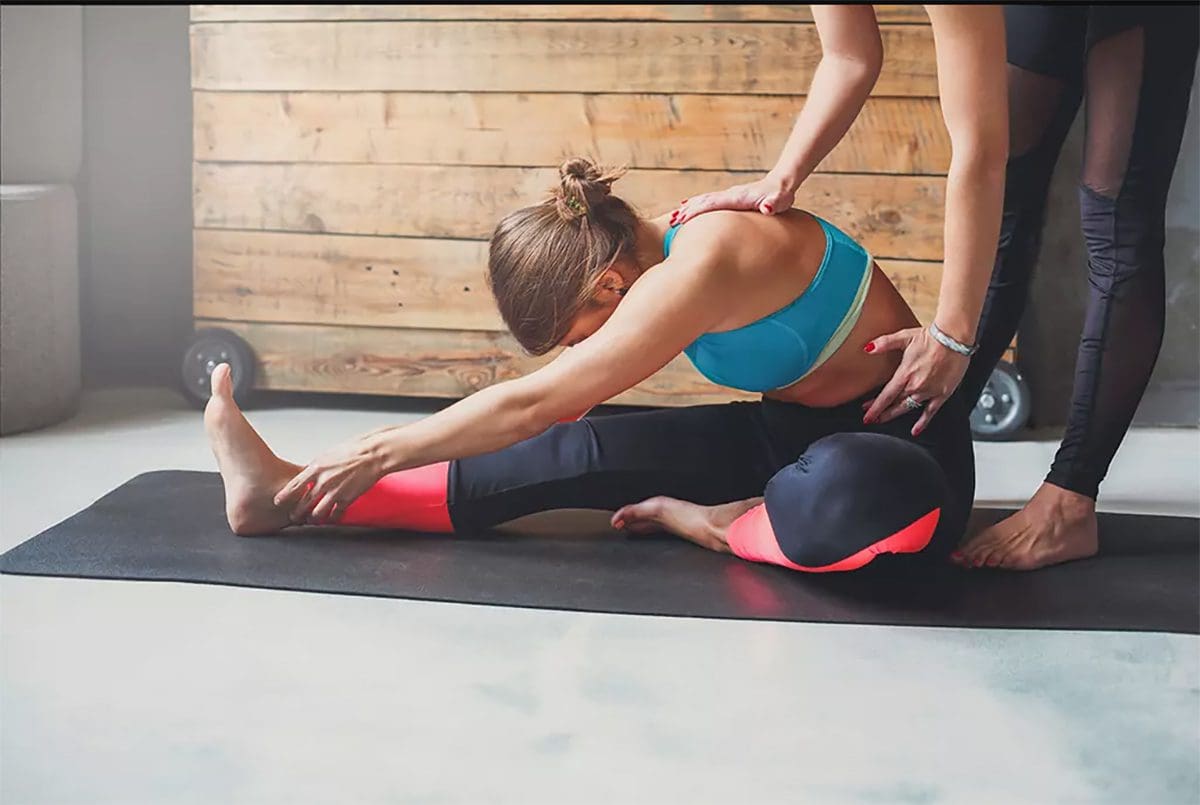THE 10 RULES OF HANDS-ON ADJUSTMENTS FOR YOGA TEACHERS
Imagine you are in the middle of a yoga class completely focused on doing triangle pose, and all of a sudden you feel the teacher grabbing your arm and stretching it almost past your limit. It would be so uncomfortable and unpleasant, wouldn’t it?
Or imagine this scenario when you are resting in child’s pose, and you feel the teacher coming towards you to give you this delicate, yet strong adjustment, but he or she barely touches you and leaves you wondering what she was even doing.
We have all been in these situations at least once, whether you have been a student and felt an uncomfortable adjustment because of the teacher; or you have been a teacher in a class and weren’t exactly 100 percent sure of how to adjust a student for a certain pose.
That is why it is so important to understand the basic guidelines to giving hands-on adjustments as a yoga teacher, and we would like to share them with you:
1) ASK FOR PERMISSION
This is probably the most important rule to start with. If you ask for permission before the yoga class starts, you may feel more confident to give adjustments since you have the actual consent of your students. A great way to find out whether someone would like an adjustment or not is to ask. You can start the beginning of the class by saying “I would like to offer hands-on adjustments during this yoga session, but if you prefer not to be touched please raise your hand and I will be mindful of your space.”
2) UNDERSTAND HOW TO DO ADJUSTMENTS CORRECTLY
It is a great idea to practice giving adjustments with someone who teaches yoga alignment, or join a yoga teacher training where you can learn more about yoga alignment in-depth.
3) HAVE CLEAR INTENTIONS
Be mindful of your intentions when adjusting a student. Use gentle, yet firm touch. Be aware of avoiding touch in sensitive places, which could give them unclear signals.
4) GIVE MODIFICATIONS FOR DIFFERENT POSTURES
It’s possible you may have class with an elderly person, a yoga beginner, and someone who is more advanced. Make sure to give options such as using a block, strap or a cushion, or a modification to deepen the posture.
5) ADJUST ON BOTH SIDES
Make sure to adjust a person on both sides, to create balance in their body.
6) KNOW WHO YOUR AUDIENCE IS
If you are teaching a pre-natal yoga class, the adjustments will be different than with someone who is an advanced hatha yogi. Same as if you are working with trauma victims, it is important to do a specialised training before offering adjustments.
7) OFFER VERBAL CUES
You can even speak out loud as you are adjusting someone, “keep your chest open and relax your shoulders.” This will remind the other students in the class to do the same, saving you time to not have to adjust every single person in the class for the same pose.
8) HOLD SPACE FOR YOUR STUDENTS
Emotions and different traumas are held in the memory of the muscles and joints. It’s possible that your student may feel emotional and need to express these emotions. Hold space in your class by making them feel safe. If you feel any resistance, or that it is uncomfortable physically or emotionally for your student, gently walk away.
9) BE MINDFUL WHILE MAKING AN ADJUSTMENT
Make sure that the student knows you are approaching them to make an adjustment by giving a gentle touch on the back before starting. This will ensure that you won’t startle them if they are super concentrated in the pose.
10) UNDERSTAND AND PRACTICE THE POSE
It is important to know how the pose feels in your own body, and knowing what is possible in each posture will help you feel more confident in adjusting your own students.
WHERE CAN I DO A HANDS-ON ADJUSTMENT TRAINING?
At Sampoorna Yoga, we offer an incredibly informative hands on adjustment teacher training course. In our online yoga adjustment TTC you will learn the ‘Art of Alignment’ along with practical tools to make you feel safe and confident while adjusting your students.
Doing an Online Yoga Alignment and Hands-on Adjustment TTC will empower you as a yoga teacher, and help your own students connect to their body on a deeper, and more spiritual level as they explore the postures and deepen their yoga practice.
YOGA ALLIANCE REGISTERED YOGA TEACHER TRAINING COURSES

Sampoorna Yoga Teacher Training School has been a registered international yoga school with Yoga Alliance, holding RYS-200, RYS-300, RYS-500, and YACEP designations since 2009. Its online and in-person Yoga Teacher Training Courses and Certifications are recognized and accepted worldwide, enabling all graduates to teach globally. Upon course completion, participants receive a 200-Hour, 300-Hour, or 50-Hour Yoga Teacher Training Certification, allowing registration as RYTs (Registered Yoga Teachers) with Yoga Alliance. Our Yoga Teacher Training Certificate Courses empower you to teach legally in any country, whether you choose to register with Yoga Alliance registration or not.




